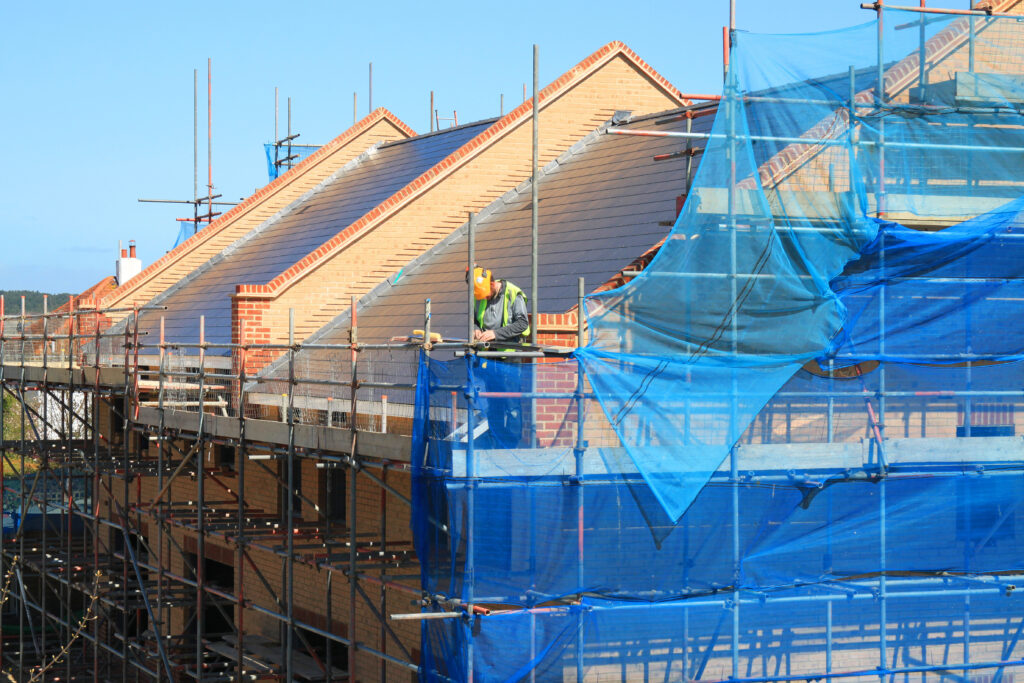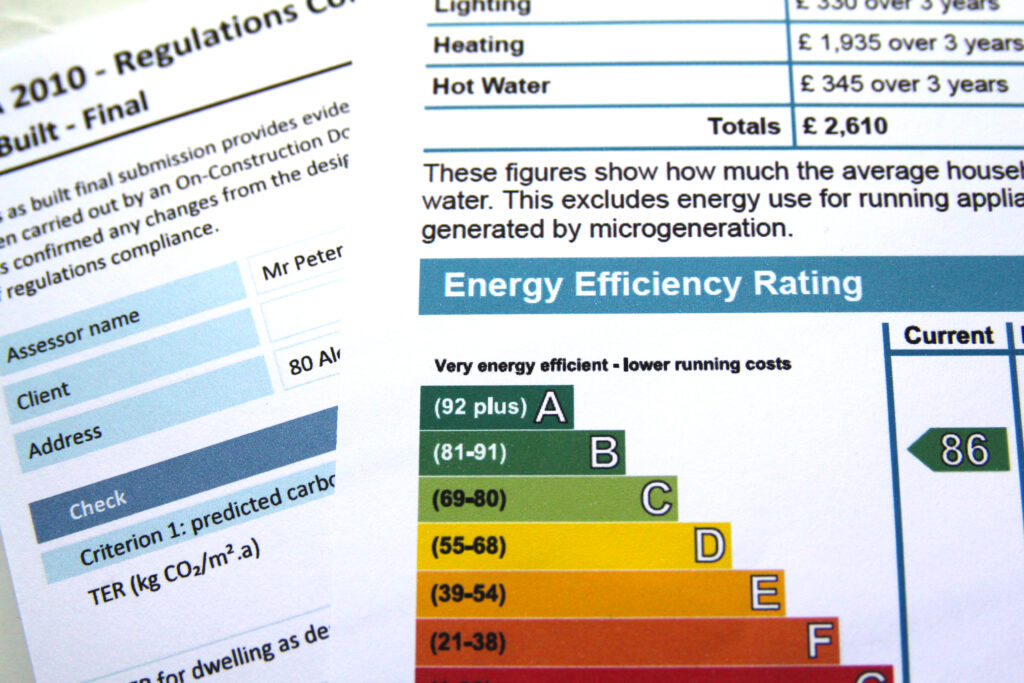SAP Calculations perform a key role in the design of new homes in the UK.
SAP Calculations, also known as a ‘SAP Assessments’, are a requirement of the Building Regulations and are required for all newly built dwellings in the UK. A SAP Rating has been required for all new homes under Part L of the building regulations since 1995, therefore most developers will be familiar with it.
However, for many first time self builders and developers it will be a new and often challenging aspect of the planning and building control process.
SAP Calculations do three things:
- They determine a SAP Rating – this is the energy related running costs of a dwelling
- They demonstrate compliance with Part L of the building regulations
- They are used to produce an Energy Performance Certificate (EPC)
You may also need a SAP for a conversion or extension, but slightly different rules apply. Scotland also has differing requirements.
What are SAP Calculations?
SAP stands for ‘Standard Assessment Procedure’. It is the only official, government approved system for assessing the energy rating for a new home.
A SAP assessor is also known as an On Construction Domestic Energy Assessor (OCDEA). They must be accredited and registered with a certification body like Elmhurst.
The SAP Rating
A SAP Rating is a way of comparing energy performance of different homes. It results in a figure between 1 and 100+ (100 representing zero energy cost and anything over means you are exporting energy).
The higher the SAP rating, the lower the fuel costs and the lower the associated emissions of carbon dioxide.
The SAP Calculations establish an energy cost based on the construction of the home, its heating system, internal lighting and any renewable technologies installed. It does not take account of energy used for cooking or appliances.
Why do I care about SAP Calculations?
In order to meet current building regulations, home builders will need to gain a ‘pass’ within the assessment. Without it, building control will not sign off the development and the property cannot be let or marketed for sale.
There are other reasons to care about the SAP Assessment. A SAP assessor can help the designer or architect to shape the energy profile of a new dwelling – minimising its energy use and carbon emissions. The effect of different construction types, heating systems and technologies can be accurately measured and in turn delivered on the ground.
Another key point is that the SAP rating broadcasts the energy performance of the property, and in turn informs the Energy Performance Certificate (EPC) which all buyers and tenants see.
A ‘pass’ is gained by meeting several compliance targets around:
- How well the fabric of the dwelling contains heat
- Solar gain
- Quality of construction and commissioning of systems
- Predicted CO2 emissions from the dwelling
Emissions are king
The headline emissions target is achieved using the DER/TER figures. CO2 emissions are measured by comparing a Target Emission Rate (TER) against the predicted Dwelling Emission Rate (DER).
This target rate is set within the SAP assessment by reference to a notional dwelling. This is a version of the proposed home, of the same size and shape, using a set of baseline values.
Importantly, these CO2 figures are now increasingly used by planners and councils to drive other objectives – from meeting sustainability targets and local renewable energy policy to determining 106 – type community contributions.

Fabric Energy Efficiency
Homes built after April 2014 in England are also assessed on Fabric Energy Efficiency. This is not a measure of carbon, but energy demand in units of kilowatt-hours per m2 per year.
How well a home retains the heat it produces will have an impact on its CO2 emissions as well as being assessed separately to gauge compliance.
Fabric Energy Efficiency is assessed using DFEE/TFEE figures. As with emissions the target is set within SAP using a set of baseline values depending on the size of the property.
What’s involved in the assessment?
A SAP Assessor will work from architects plans and construction detail, together with a full HVAC (heating, ventilation and air conditioning) specification. For this reason drawings need to be scaled, accurate and show all elevations, sections, floor and site plans.
Building the model
The assessor will scale off of these plans either electronically or by hand to create a replica of the proposed dwelling(s) in accredited SAP assessment software. There 
Building Services
Once the site form is established, the heating, lighting and ventilation systems are added – specific products will be picked from manufacturer databases where they are known.
Construction Details
All thermal elements (walls , floors, roofs and openings) are added in detail together with all calculations for thermal junctions. Any renewable technologies and cooling are also added.
Outputs
Once complete, a SAP calculation is capable of producing a raft of detailed reporting outputs, from site form, heat losses and energy demand to seasonal variations, CO2 emissions and renewables contributions, to name just a few.
Iteration
It is important to note that many homes do not pass ‘first time’ and will not initially comply with Part L. This is a critical part of the assessment process where the assessor, client and designer will need to explore different options. This may require running further assessments with alternative technologies and construction types to arrive at a compliant assessment.
How Do I Make Sure of a Pass?
It’s fair to say that developers and architects didn’t need to pay much attention to SAP in the old days – but recent years have brought significant changes to the SAP metrics and Part L Building regs. Starting work without a design stage SAP assessment is not an option!
This is primarily because CO2 emissions targets have tightened enormously – driven as they are by European and UK climate policies. An average new build designed just 5 years ago is highly unlike to pass the regulations today.
We are often asked to explain why some builds fail and some pass, and it isn’t always easy to give a straight answer. Numerous factors can play a part, from the size of a boiler to a junction in a wall, to the thickness of insulation in a floor, to which direction the house is pointing!
Some factors can be beyond the clients control – for example having no connection to mains gas could mean having to use an oil or LPG system. These fuels have higher cost and CO2 emissions factors within SAP, and as the Target Emission Rate is set based on a mains gas system, you take a hit.
Tips?
We carry out SAP calcs every day – spanning single self builds through to 30 storey apartment blocks, so we have a good idea of what works and what does not.
If we ignore the wider climate change issues, resist technicalities, and assume we are not trying to produce a zero carbon house, we can tie down a few good principles which will give you a good chance of success:
1. Minimum U-values are there to be beaten, not followed
If the fabric of the building is well insulated, you will not need fancy renewable technologies to get you through. Improve your U-values by designing as much insulation into the walls, floors and roofs as you possibly can.
2. Windows and doors lose a lot of heat
Pay attention to the u values on the openings you are specifying and get them as low as possible, ideally 1.4 W/m2K or less
3. It’s not the boiler, it’s the controls
Zoned heating and load / weather compensators for boilers will often have a more significant effect on the SAP rating than the system itself.
4. Get it airtight
All new builds require Airtightness Testing on completion and the resulting figure goes into the SAP Calcs. Make sure the envelope is sealed and get a pre-test check carried out.
5. Pay attention to thermal bridging
This is heat loss through junctions with external walls. Follow a scheme such as Accredited Construction Details (ACD’s) which will allow us to avoid using default figures. For our guide see our page on Thermal Bridging.
Start early!
The one key point – even more important than those above, is to start early. If we receive a set of plans half way through a build, there’s not a lot we can do to change the energy performance of that building.
This scenario also leads to much bad practice and usually the installation of unsuitable, expensive technologies added in hindsight just to pass building regs or to meet a planning condition.
Avoid this by engaging with your SAP assessor as early in the process as possible – often this will be well before planning has even been submitted, and certainly well before building regs applications.
Is it just for new builds?
Not at all. Many extensions, conversions and change of use schemes will require SAP Calculations under Part L1b of the building regs:
- Extensions with more than 25% glazing-to-floor area (SAP Calculations for Extensions)
- Barn conversions
- Commercial to domestic conversions
- Conversion of a single dwelling into flats or apartments
Need Help With Your SAP Calculations?
We’re here to talk through your project, any time. Just give us a call on 0330 055 34 05 , or email us at be@buildenergy.co.uk
